You want to use the best software for your work—everyone does. Whether you're a cook or a web designer, well-made tools make your work more efficient, and more fun.
But how do you choose the best software—and how do you define "best", anyhow? There are more email, CRM, and project management apps than you could ever test on your own. Ask your friends and colleagues, and each one will recommend a different tool.
If you need a hammer, it's pretty easy to find a nice one. But software is more subjective: the best tool for you may not be the best for someone else.
So how do today's best companies choose their software stack? As founder of Stacklist, my team and I have interviewed hundreds of entrepreneurs to learn more about what makes their startups tick. Here are the ten things we've learned from them about how they select software and use it to help their teams work more efficiently.
How to Pick the Best Software:
1. Focus on Your Business

When launching a company, just start moving. Tools can be distracting and they can wait; your first priority should be building, selling, and promoting your core product. That's the most important tip we've heard from founders.
"If you're in the business of selling something, then you should start selling it," says Upraised Learning founder Alex Weinberg. "Don't spend too much time waiting around to get the perfect infrastructure set up. Just sell."
It's crucial to limit distraction when you're getting started—and while software can be a valuable tool, it can also be a distraction. "There are so many tools out there, the tricky thing is to manage them all," says GoKid founder Sophie Koven. "It’s nice to have tools, but sometimes we have feature creep when we’re using too many things."
In an attempt to combat that feature creep, the BarterSugar team focuses on a narrow-but-powerful group of tools. "We try to use as many Gmail integrations and tools on centralized platforms as possible, so that we aren’t distracted by so many different platforms," says CEO Layla Tabatabaie.
Takeaway: Apps are only tools to help you get stuff done. Try to make due with what you have for as long as you have, and only get new apps when you really need them.
2. Analyze Your Needs
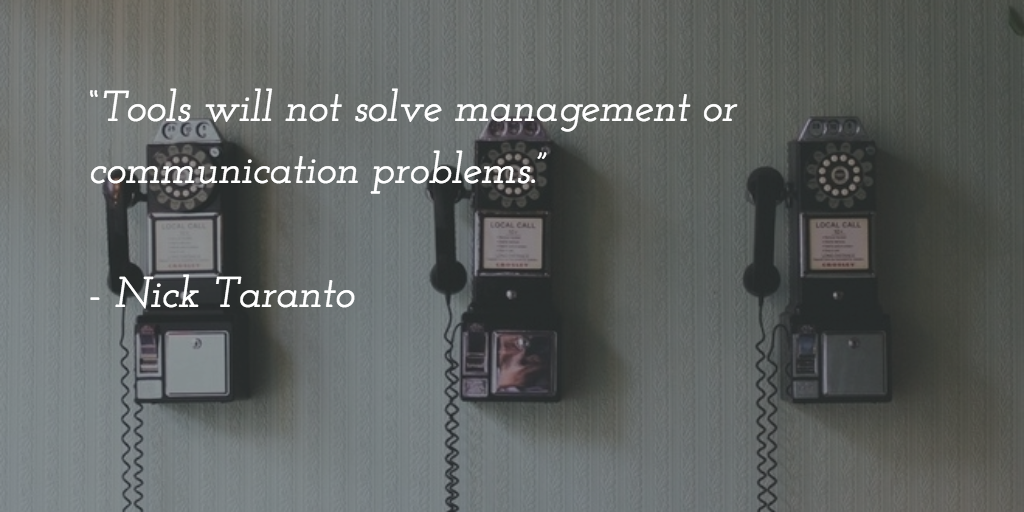
A new app is rarely a silver bullet. As Nick Taranto, Founder/CEO of Plated says, "Tools will not solve management or communication problems—they will definitely exacerbate them if you haven't solved the underlying issues already. So it's more important to figure out your processes and communication guidelines before starting to layer on tools."
So, once you’re ready to shop for tools, proceed with caution. Make do with Gmail, Google Docs, and other lightweight or homegrown solutions until you have identified your pain points and the real needs of your team. You might not need new software just yet.
"Our general philosophy is that, even when we build our own software, we should never build or purchase something before we have a clear understanding of what we need it to do," says Blueprint Health founder Mathew Farkash. See how much you can get done with what you have, and when the process is really painful, you should start shopping around.
But before overloading your team with a barrage of tools that seem shiny and cool, take a hard look at your existing processes and workflows, and consider which tools specifically match them. "Don’t look at features, look at workflows," says SmarterU founder Dan Belhassen. "Workflows are what you are going to have to live with. Features are just bullet points. That will be the difference between being satisfied in a year or looking for another tool in a year."
Takeaway: Don't pick an app just to have something new—figure out what you need from a tool, then research for an app that fits those needs.
3. Do Research

So you’re ready to shop for tools—exciting! But finding tools isn’t about ratings and what's hot and buzzy. Instead, it’s about identifying the tools most suitable for your team, goals, and workflows.
A simple option is to find out what software companies like yours are using. That feedback will be the most objective and relevant to your team, making the tools most likely to do what you need.
Trust us, we’ve done our research on this one. Over 70% of entrepreneurs tell us they base their infrastructure decisions on the advice of their peers in the startup community.
So ask around. See what your colleagues in other companies are using, or check Medium and Stacklist posts to see what companies similar to yours are using. Then, check app reviews—like the ones published by Zapier—to see if the tool really seems worthwhile, and give the trial version a solid run before settling.
Doing your research upfront will help you avoid the time-sink of switching solutions down the road. "If you pick the wrong tool, it is so painful to switch. It can set your company back," says DK New Media founder Doug Karr. "Companies will keep using horrible tools just because they started out with them… I don’t care who says what tool is best, I always look for the right fit."
Take your time. Make sure that the app you choose addresses your specific needs and provides value over the longest period of time.
Takeaway: Don't settle on the first app you find—read reviews and ask for recommendations to make sure you've picked a great tool.
4. Don't Scrimp

42% of the companies we interview—most of which are just getting started—say cost is the primary factor in choosing software. Fortunately, there are plenty of cheap or free options to get started with, from fully free apps like Google Docs to apps with generous free tiers like MailChimp.
But you shouldn’t choose tools just because they’re cheap. Switching costs—in dollars and hours—are always a consideration. "In the early stage, cash is everything," says willa VP of Finance/Operations Bailey Carson, "though I would pay more for something that would give me the flexibility to get out of it quickly."
Founder Shield CEO Benji Markoff agrees:
"You get what you pay for most of the time. If you buy something terrible in order to pay less, it'll just make more work for you down the road. Time is money, so don't only take the price into consideration. When you scale, you'll end up switching to the better product anyway. I'd rather pay as much money as I need for something that helps you grow, rather than waste money on a placeholder."
Consider cost, but pay for value. By the time startups have grown enough to raise Series A investment, only 28% identify cost as a driving factor behind tool selection. Instead, they focus on usability, integration capabilities and best-of-breed tools that will help them streamline workflows and meet their goals.
Takeaway: Software can be expensive, but if it fits a need and helps you do more, it can more than pay for itself over time.
5. Ask for Help
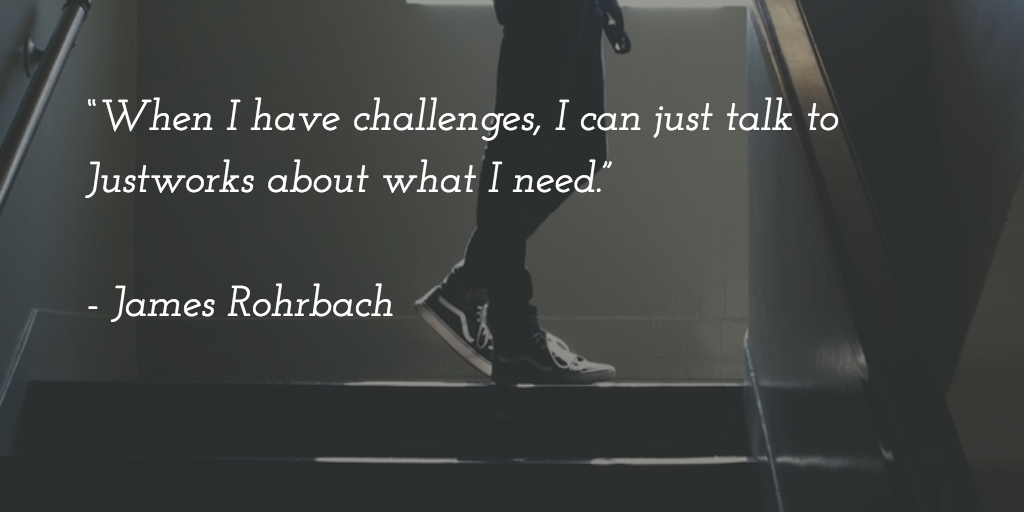
When you're getting started with a new app, you're bound to have questions and concerns. So ask. Just like your company, the software developers who make the tools you use want their products to work well for you.
Don’t hesitate to suggest new features, either. A software company won’t always be able to accommodate requests (and you shouldn’t adopt a tool assuming that you’ll be able to change it).
But many apps—especially startups—take customer suggestions very seriously, and have a rapid product development cycle that allows for such flexibility.
You never know: The app might be able to do what you need, and you simply haven't uncovered the feature yet. Asking for help can be the difference between successfully implementing the new app and giving up.
In fact, getting help quickly can be one of the best reasons to choose software from a startup versus more established players. That's why Fluent City chose to use Justworks over the more popular ADP. "When I have challenges, I can just talk to Justworks about what I need, and they’ll go ahead and build it," says CEO James Rohrbach.
Takeaway: Companies want you to love their software, so ask for help when getting started.
6. Customize Apps for Your Needs
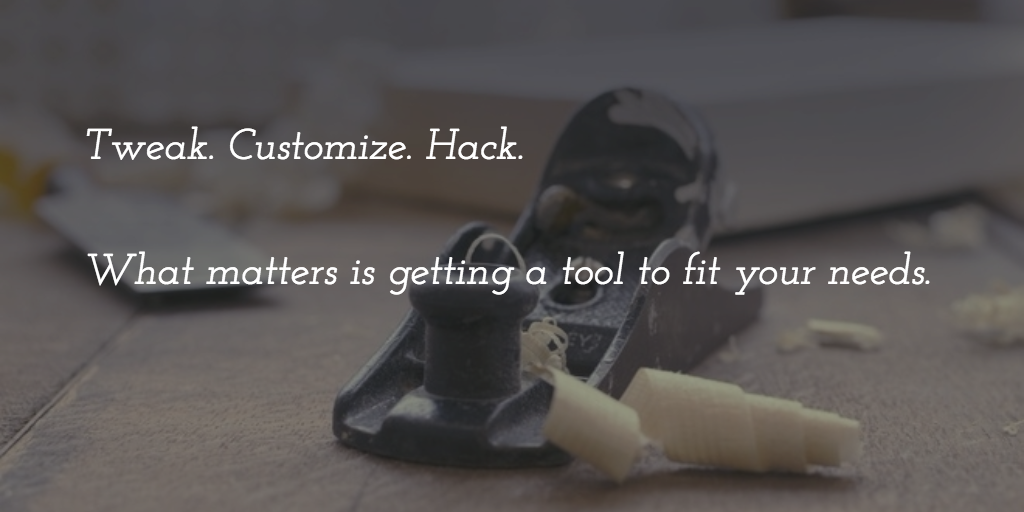
We love hearing about companies who push tools to their limit, using them beyond their intended use case and often accomplishing multiple objectives with one platform. Spreadsheets and kanban board apps are popular for this, since their flexiblity means you can turn them into just about anything you want.
More advanced apps can be used in multiple ways, too. Intercom is a great example of this: Brightpod puts it to work for CRM, email marketing and customer service, while Simple Texting uses it for both customer service and CRM.
Understanding your own needs and workflows will help you get the most out of your tools. Sometimes you'll have to tweak settings to make a tool fit your team's style. Other times, you might need need to use an app for a different purpose than it's originally intended for. What matters is getting a tool to fit your needs.
Takeaway: Don't worry about defaults—customize apps to fit the way you work.
Want to build your own app? Try doing it with a database builder app that lets you customize the way you view and save data.
7. Integrate Everything

We’re all about maximizing the value of tools—and there's no better way to get more out of your apps than to get them to work together. If you want to automate tasks, copy and paste less, and tweak tools to work the way you want, you'll often need to connect them. Hook a spreadsheet with your CRM, then connect an email marketing app, and you'll have your own marketing automation workflow without needing any new software.
"Minimizing complexity is a big deal for us," says Dasher CEO Jesse Boyes. "Every day, we just want to come in and focus on building product, so every point of friction along the way really hurts us. The efficiency of getting your tools and processes smoothly integrated really quickly is very important to us."
Zapier, an app integration tool that connects more than 500 apps, is the glue for your workflows. Don’t just take our word for it: Legions of Stacklisters vouch for the impact Zapier has made in their organization.
"Our whole process is run on Zapier automations, and it is by far the most important thing we use," says Book In A Box founder Zach Obront. "We have our processes set up to be as automated as possible, so if there are five actions to do, there will be a form set up that will trigger each next step to be submitted and uploaded, automatically."
Takeaway: Automations can help connect the new app to everything else your team is using, to get more done faster.
Learn how to build advanced workflows with Zapier's new Multi-Step Zaps.
8. Get Everyone Onboard
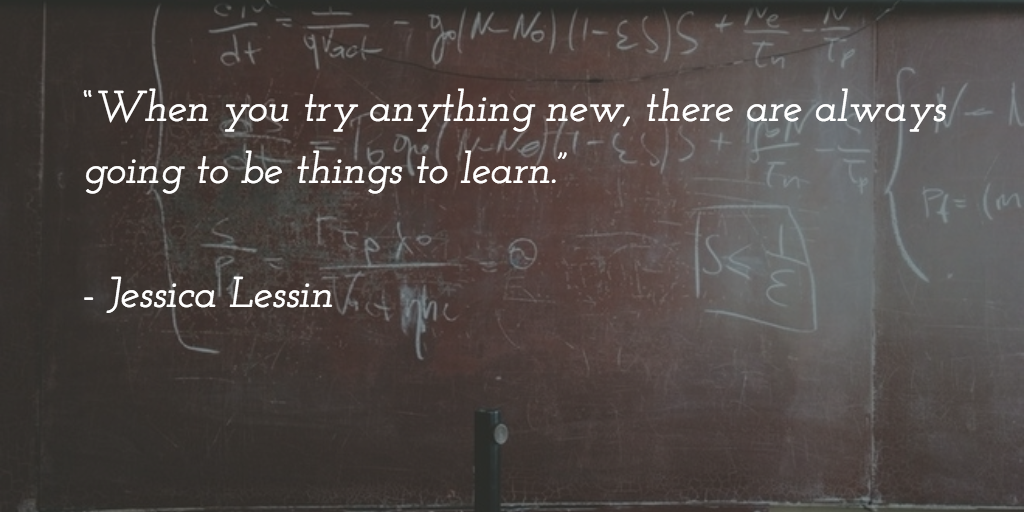
If your team won’t use the new app, there’s no point in implementing it. Adoption is critical.
The Information founder Jessica Lessin says it best when relating her team’s adoption of Asana:
"I think most project management systems are very similar. It's most important to pick one, stick with it and build a culture around it. I knew some companies who were using Asana, so we just decided to commit to it. When you try anything new, there are always going to be things to learn, limitations, hurdles, so we just wanted to move quickly and pick one."
Maybe you didn't pick the best app. Maybe there really is no best app. But once you've picked a tool, get everyone to use it, and don't worry about alternatives. That's the only way to get any benefit from it.
Takeaway: Don't just find a new app: make sure everyone on your team is using it.
9. Communicate, Communicate, Communicate
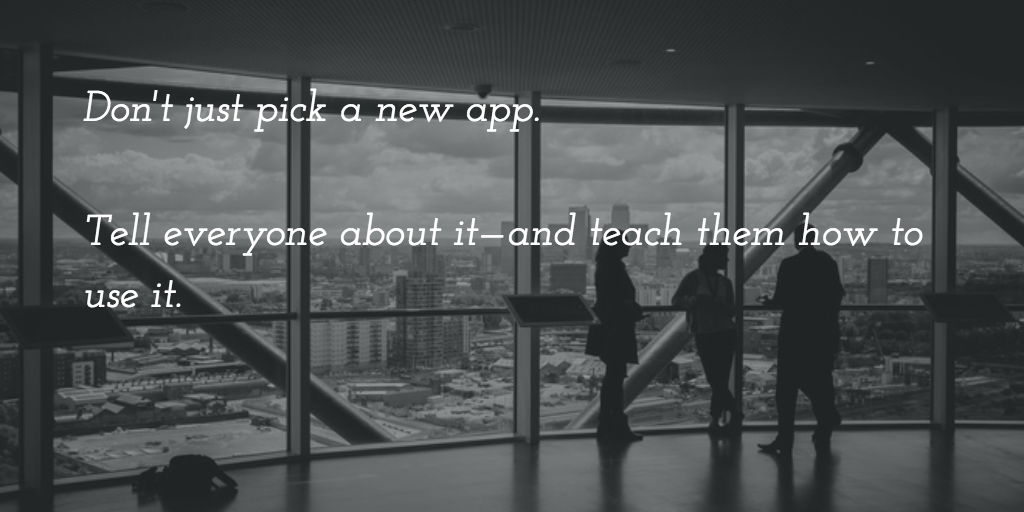
You might be using the same tool, but is everyone using it the same way? Your team needs to stay on the same page to avoid bottlenecks.
Communicate about everything regarding your software choice. Tell your team why you picked this app, what problem it solves, and how to use it effectively in your work. Perhaps make some internal documentation that teaches your team about how to use the app, to make sure everyone's on the same page with it.
And if your team is having trouble communicating effectively, you might want to start over the process and pick out a new collaboration app, too. "Collaboration in real time is key," says Ryan Vance, Head of Content at CreativeLive. Not every startup has project management, HR, or CRM apps, but every startup we’ve spoken to has some sort of internal communication tool.
Everyone needs a simple way to quickly talk to their team—and 64% of teams we've interviewed use Slack for that. There's other options, too, including Google Hangouts (used by 19%), Skype (12%), and HipChat (10%).
There's no reason to spend too much, with that many options. "In my mind, you should pay what you need to in order to communicate with your team effectively, but stay within reason and budget for other services," says Vance. Once you've picked a tool, go through the same steps, and make sure everyone's onboard and knows how to use the communications tool, too, so you'll have an easier time getting them using the next new app you add to your repertoire.
Takeaway: Make sure everyone knows how to use the new app—and what they should be using it for.
10. Share Your Favorite Software
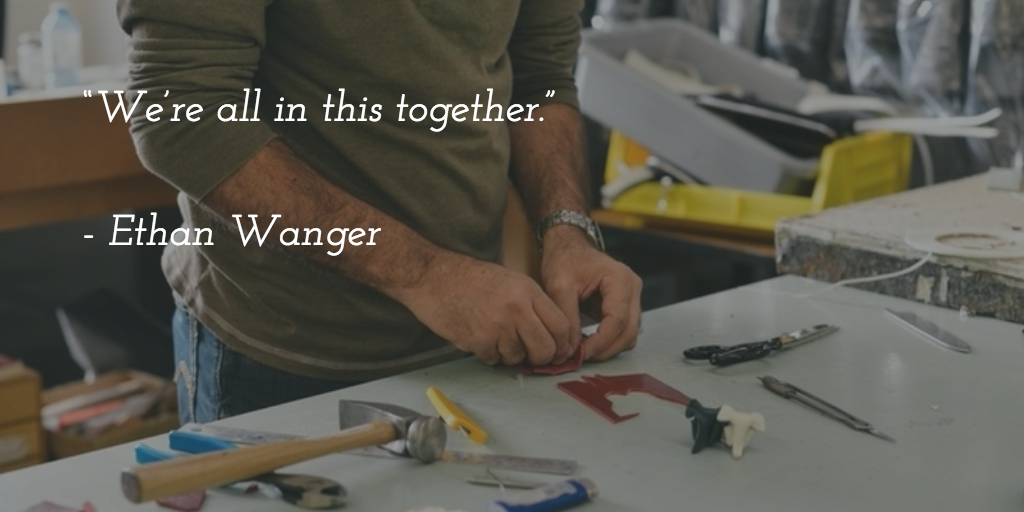
Kinnek co-founder Karthik Sridharan loves the "pay it forward" culture of the startup scene. "It’s been so refreshing to be part of a larger community where people share information and recommendations for tools," he says.
Choosing software is an arduous, time-consuming process, involving countless hours of research, trial and error, and, inevitably, some failure. So share your experiences and objective feedback regarding these tools—either on a platform like Stacklist, or more casually among friends.
"We’re all in this together," says RealLife Global co-founder Ethan Wanger. Once you've found software that works for you, help your fellow entrepreneurs avoid the gut-wrenching selection process by sharing what works for you.
As Blinkbuggy CEO Emma Weisberg puts it, "I feel as though my entire life as a founder is a race against time. So anything that can help me be more efficient, save time and find me the best answer is much appreciated, and anything I can do to help other founders be more efficient I am more than happy to do."
Takeaway: Once you've found an app that works for you, tell others about it to help them simplify the software discovery process.
Discover the Best Software Automatically

We can't tell you which app would be best for your team, but we can help you choose one that fits your needs better than the others.
Check out Stacklist's software profiles of companies around your industry, or try Zapier's app guides, roundups, and software books to help you choose among best-in-breed options.
Special thanks to each startup who shared feedback for this article!
Software photo by Niall Kennedy via Flickr.





